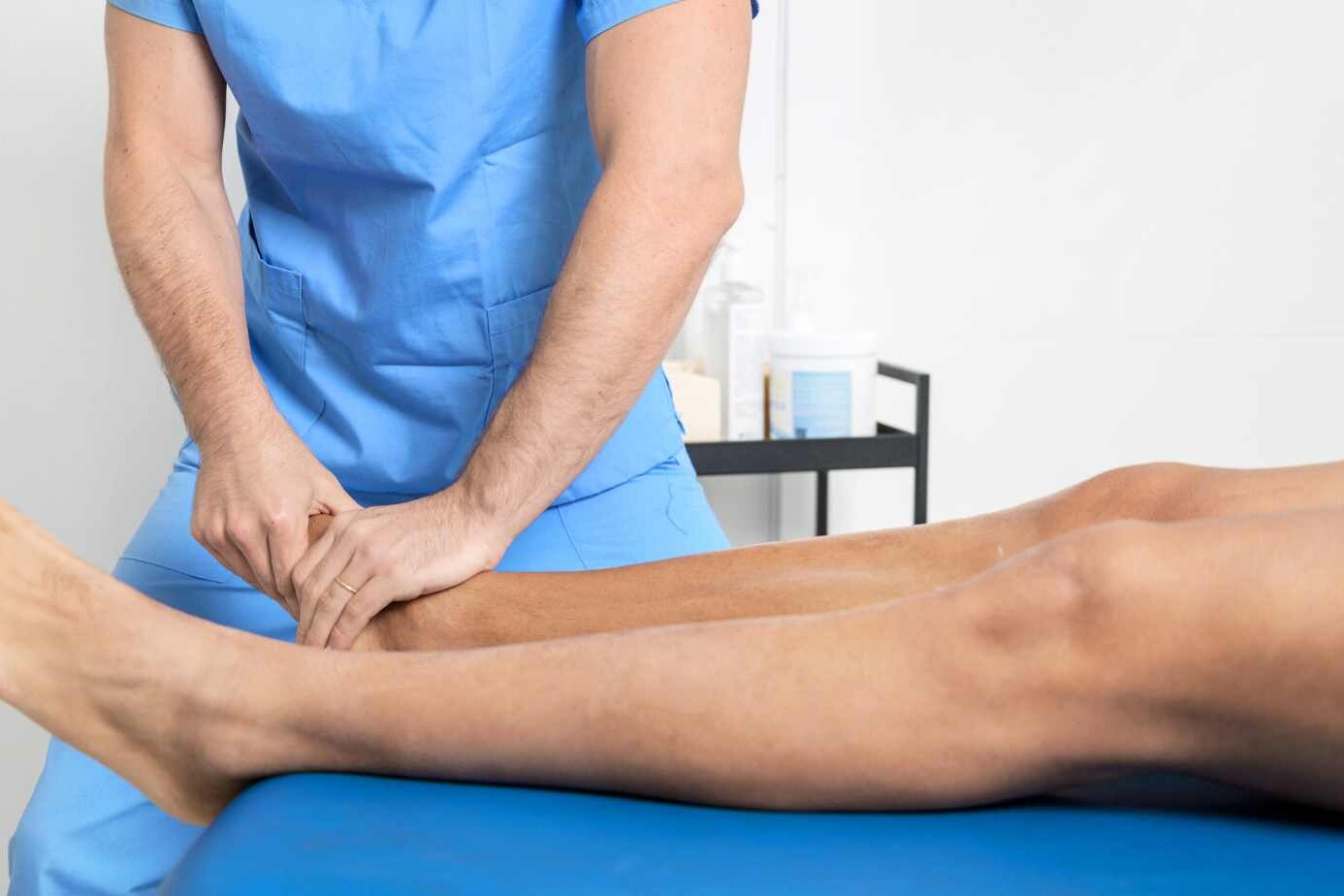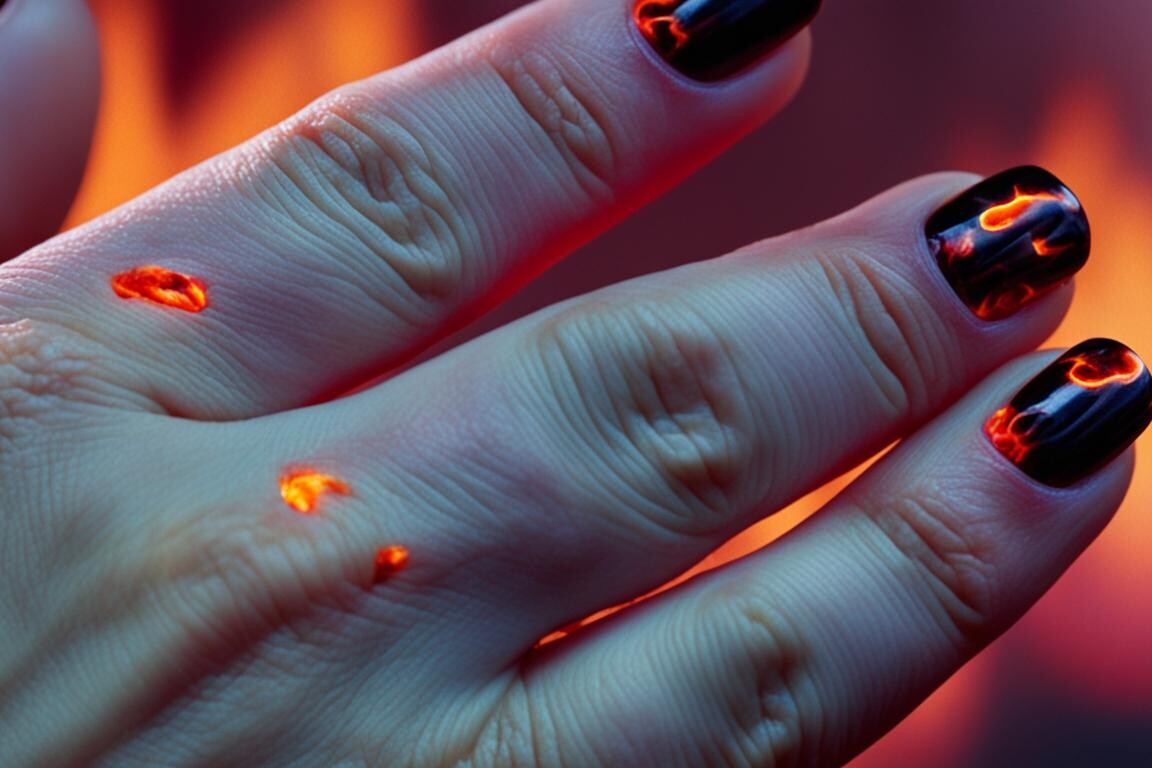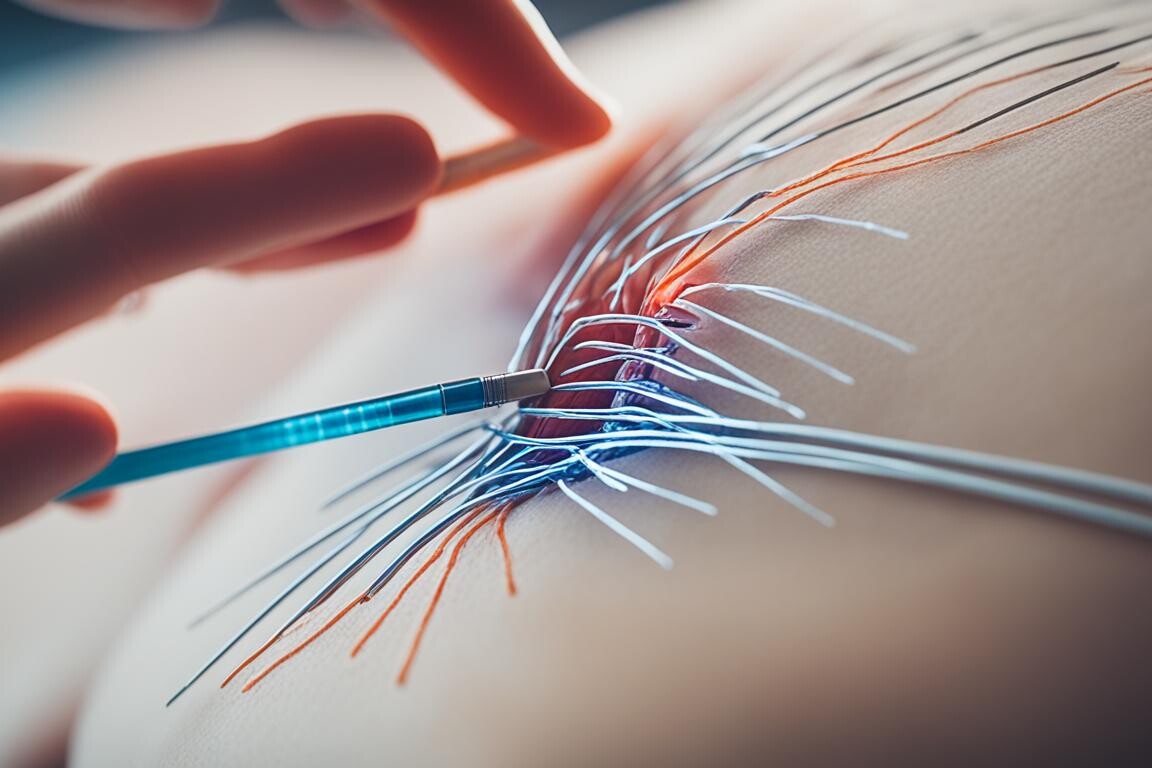CRPS type 1 is a chronic pain condition that often occurs after an injury or medical event like surgery, trauma, stroke, or heart attack. The pain and inflammation associated with this condition can be long-lasting and disproportionate to the severity of the initial injury.
It mainly affects the arm, leg, hand, or foot and can be acute or chronic. Studies have shown that women are more prone to developing CRPS type 1 than men. Early treatment is crucial for better outcomes.
This article will delve into the causes, symptoms, diagnosis, treatment options, and preventive measures for CRPS type 1. We will also discuss the advancements in research and supportive care strategies for individuals with this condition.
So, let’s explore the world of CRPS type 1 and how we can manage chronic pain effectively!
Table of Contents
ToggleWhat is Complex Regional Pain Syndrome?
Complex regional pain syndrome (CRPS) is a debilitating condition characterized by chronic pain. It is also known as reflex sympathetic dystrophy (RSD) or causalgia. CRPS typically affects the arms, legs, hands, or feet and can occur following an injury or trauma.
The symptoms of CRPS can vary from person to person, but commonly include:
- Continuous burning or throbbing pain
- Sensitivity to touch or cold
- Swelling of the affected area
- Changes in skin temperature and colour
- Changes in skin texture
- Changes in hair and nail growth
- Joint stiffness
- Muscle spasms
- Decreased ability to move the affected body part
These symptoms can be distressing and significantly impact the quality of life of individuals with CRPS. The condition can also lead to psychological distress and functional impairment.
There are two types of CRPS:
- CRPS type 1 occurs without specific nerve damage or identifiable cause. An injury or surgery often triggers it.
- CRPS type 2: This type is associated with a distinct nerve injury and is often caused by a traumatic event such as a fracture, crush injury, or nerve damage.
Diagnosis of CRPS involves a detailed examination by a healthcare professional and diagnostic criteria such as the Budapest criteria. The requirements consider the patient’s symptoms, medical history, and physical findings to make an accurate diagnosis.
Early diagnosis and treatment of CRPS are crucial for better outcomes. It is essential for individuals experiencing symptoms of CRPS to seek medical attention and receive appropriate care.
| Symptoms of CRPS | Diagnosis |
|---|---|
| Continuous burning or throbbing pain | Detailed examination by a healthcare professional |
| Sensitivity to touch or cold | Use of diagnostic criteria, such as the Budapest criteria |
| Swelling of the affected area | |
| Changes in skin temperature and color | |
| Changes in skin texture | |
| Changes in hair and nail growth | |
| Joint stiffness | |
| Muscle spasms | |
| Decreased ability to move the affected body part |
Causes and Risk Factors of CRPS Type 1
The exact cause of CRPS type 1 has yet to be fully understood. Still, it is believed to be related to an injury or trauma that affects the peripheral and central nervous systems. It can be triggered by various factors such as fractures, surgery, sprains/strains, burns or cuts, and being in a cast. Not everyone who experiences trauma or injury develops CRPS, suggesting that there may be other factors at play. Certain risk factors, such as being female, having severe trauma, lower limb injury (especially the foot), or pre-existing conditions like poor circulation, diabetes, autoimmune disorders, or prior nerve damage, can increase the likelihood of developing CRPS type 1.
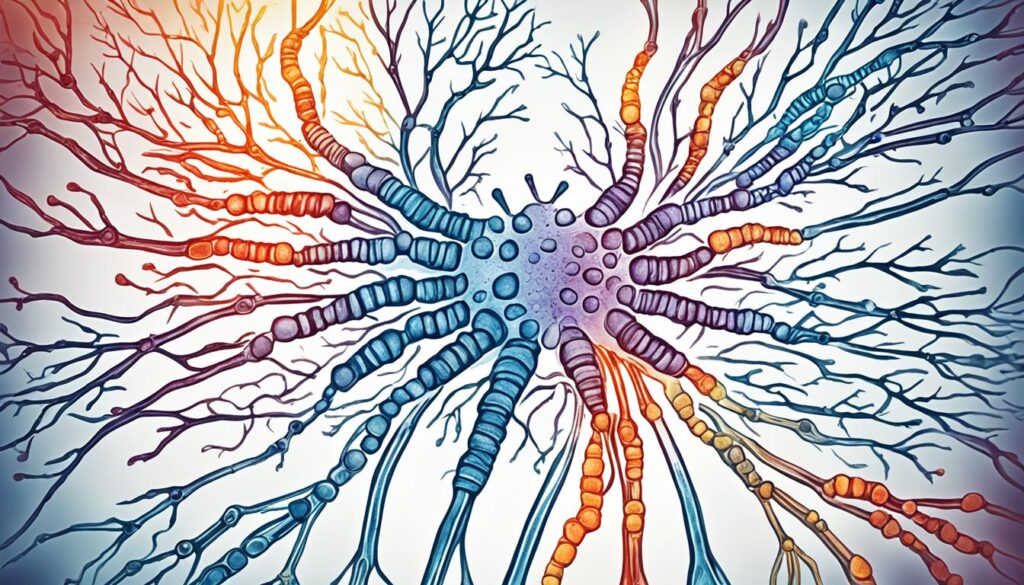
| Risk Factors for CRPS Type 1 |
|---|
| Being female |
| Severe trauma |
| Lower limb injury (especially the foot) |
| Poor circulation |
| Diabetes |
| Autoimmune disorders |
| Prior nerve damage |
Symptoms and Diagnosis of CRPS Type 1
Living with Complex Regional Pain Syndrome Type 1 (CRPS Type 1) can be challenging due to its diverse range of symptoms. The condition often manifests as continuous burning or throbbing pain, sensitivity to touch or cold, swelling, and changes in skin temperature and colour. Additionally, patients may experience changes in skin texture, hair and nail growth, joint stiffness, muscle spasms, and a decreased ability to move the affected body part.
Diagnosing CRPS Type 1 involves a comprehensive evaluation by a healthcare professional. The practitioner will assess the patient’s symptoms and medical history and conduct a physical examination. A diagnostic tool called the Budapest criteria is commonly used. This criterion considers abnormal pain sensation, temperature changes, swelling, and decreased mobility to determine if a patient meets the criteria for CRPS Type 1.
Early complex regional pain syndrome diagnosis and treatment are essential for managing CRPS Type 1 effectively. Identifying the condition promptly allows healthcare professionals to implement early treatment interventions and minimize the impact on the patient’s quality of life.
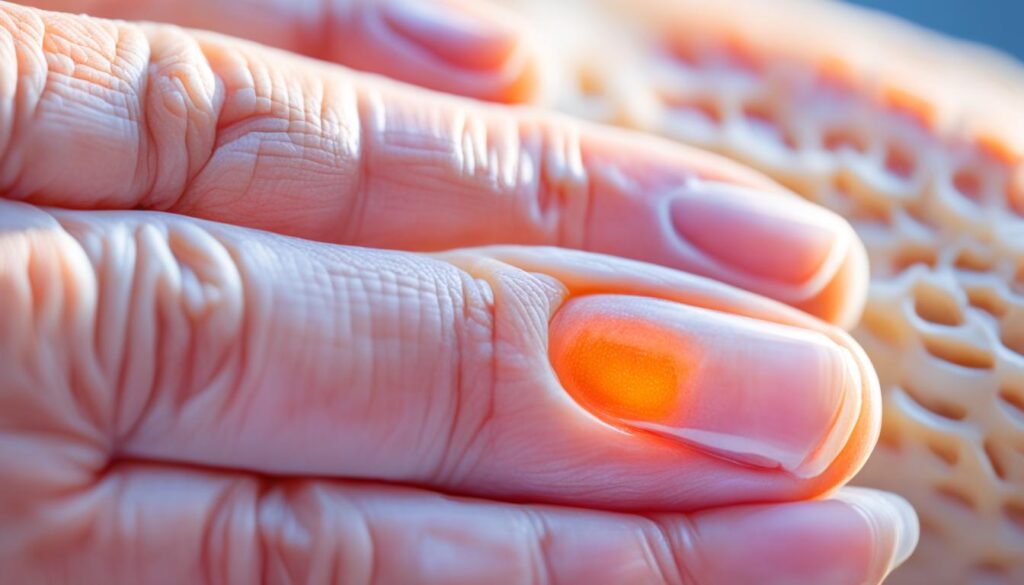
Signs and Symptoms of CRPS Type 1:
- Continuous burning or throbbing pain
- Sensitivity to touch or cold
- Swelling
- Changes in skin temperature and colour
- Changes in skin texture
- Changes in hair and nail growth
- Joint stiffness
- Muscle spasms
- Decreased ability to move the affected body part
It is important to note that these symptoms may vary from person to person and can change over time. Suppose you experience these symptoms or suspect you may have CRPS Type 1. In that case, consulting with a healthcare professional for a proper diagnosis and appropriate treatment is crucial.
Treatment Options for CRPS Type 1
The treatment of CRPS type 1 focuses on managing pain, improving function, and enhancing quality of life. A multidisciplinary approach is often necessary to address the complex nature of this condition. Some standard treatment options include:
1. Physical Therapy
Physical therapy plays a crucial role in CRPS type 1 management. Therapeutic exercises, manual therapy, and heat or cold treatment can help reduce pain, increase range of motion, and improve overall function.
2. Medications
Various medications are used to relieve pain and manage other symptoms associated with CRPS type 1. Pain relievers, such as nonsteroidal anti-inflammatory drugs (NSAIDs), may provide temporary relief. Antidepressants, anticonvulsants, and bisphosphonates are commonly prescribed to help alleviate neuropathic pain.
3. Nerve Blocks
Nerve blocks involve the injection of local anaesthetics or corticosteroids around the affected nerves to block pain signals. These injections can provide temporary relief and improve function.
4. Sympathetic Nerve Ganglion Stimulation
Sympathetic nerve ganglion stimulation is a minimally invasive procedure that uses electrical stimulation to modulate the sympathetic nervous system. It can help alleviate pain and improve blood flow in the affected area.
5. Spinal Cord Stimulation
Spinal cord stimulation involves implanting a device that delivers electrical impulses to the spinal cord. This treatment modality can effectively reduce pain signals and improve function in some individuals with CRPS type 1.
6. Dorsal Root Ganglion Stimulation
Dorsal root ganglion stimulation targets specific nerves in the dorsal root ganglion, providing targeted pain relief for CRPS type 1. This procedure offers a viable option for individuals without relief from crps alternative treatments.
These are just a few examples of the treatment options available for CRPS type 1. Other modalities that may be beneficial include virtual reality therapy, ultrasound-guided pulsed radiofrequency, and psychological interventions to address the emotional and psychological aspects of living with chronic pain.
It’s important to note that treatment choice depends on the individual patient and their specific needs. A comprehensive treatment plan tailored to each patient maximizes the chances of effectively managing CRPS type 1.
Complications and Prognosis of CRPS Type 1
If left untreated or not diagnosed early, CRPS type 1 can lead to complications that significantly impact daily life. These complications include tissue wasting, also known as atrophy, and muscle tightening, known as contracture. Both of these complications can be debilitating and affect the function of the affected limb.
Tissue wasting, or atrophy, refers to the weakening and wasting away of the skin, bones, and muscles in the affected limb. This can result in decreased strength and mobility, making it challenging to perform everyday activities. The affected limb may become visibly thinner and weaker over time.
Muscle tightening, or contracture, is when the muscles, tendons, and connective tissues in the hand, fingers, foot, or toes become tightened and fixed in a particular position. This can lead to stiffness, limited range of motion, and difficulty using the affected limb. Contracture can significantly impact the individual’s ability to perform tasks that require fine motor skills.
The prognosis of CRPS type 1 can vary from person to person. Sometimes, the condition may go into spontaneous remission, meaning the symptoms resolve independently. However, for others, symptoms may persist and become chronic, causing long-term pain and functional limitations.
Early diagnosis and prompt treatment are crucial in improving the prognosis of CRPS type 1. Timely intervention can help prevent or minimize complications and increase the chances of symptom improvement and remission.
Prevention of CRPS Type 1
While it may not be possible to prevent CRPS type 1 entirely, some steps can be taken to reduce the risk of developing this condition. Studies have shown that specific preventive measures can effectively lower the risk of CRPS. Here are some strategies that can help:
- Take high doses of vitamin C: Some studies suggest that vitamin C supplementation after a wrist fracture may reduce the risk of developing CRPS. Vitamin C is known for its antioxidant properties and role in collagen formation. It may help support the healing process and prevent the onset of CRPS.
- Practice early mobilization: Early mobilization reduces the likelihood of developing CRPS after a stroke. Engaging in gentle movement and exercise can help improve blood flow, reduce inflammation, and promote healing, potentially minimizing the risk of CRPS development.
- Prompt and appropriate management of trauma or injury: It is essential to seek medical attention promptly following any trauma or injury to minimize the risk of CRPS. Proper evaluation, diagnosis, and treatment early on can help prevent the progression of symptoms and the development of CRPS.
- Maintain good circulation and overall health: Healthy habits such as regular exercise, proper nutrition, and managing underlying health conditions can contribute to good vascular health, reducing the risk of CRPS. It is important to prioritize lifestyle factors that support optimal circulation and overall well-being.
- Avoid smoking: Smoking can impair blood flow and contribute to decreased wound healing and tissue damage. By quitting smoking or avoiding exposure to tobacco smoke, individuals can reduce the risk of CRPS development.
Discussing potential preventive strategies with a healthcare professional is highly recommended. They can provide personalized guidance based on individual circumstances and risk factors.
| Preventive Measures | Effectiveness |
|---|---|
| High doses of vitamin C | Some evidence suggests a potential reduction in risk |
| Early mobilization | Associated with a lower risk of CRPS following a stroke |
| Prompt and appropriate management of trauma or injury | Timely treatment can prevent the progression of symptoms |
| Maintaining good circulation and overall health | Healthy habits support vascular health and minimize risk |
| Avoiding smoking | Smoking cessation reduces the risk of CRPS development |
Research and Advances in CRPS Type 1 Treatment
Ongoing research is being conducted further to understand the underlying mechanisms of CRPS type 1 and to develop more effective treatment approaches. Researchers are exploring various innovative techniques and therapies to improve pain management and enhance the quality of life for individuals with CRPS type 1.
Ketamine for Pain Management
One promising area of research is the use of ketamine infusions for pain relief in CRPS type 1. Ketamine is a medication that can modulate pain signals in the brain, providing temporary relief from chronic pain. Studies have shown that ketamine infusions may help alleviate CRPS-related pain and improve overall function.
Advancements in Neuromodulation Techniques
Another key research focus is the development of advanced neuromodulation techniques to manage CRPS type 1. Two notable approaches investigated are spinal cord stimulation and dorsal root ganglion (DRG) stimulation.
Spinal cord stimulation involves the implantation of a device that delivers electrical pulses to the spinal cord, blocking pain signals and providing pain relief. This technique has shown promising results in relieving CRPS type 1 pain resistant to traditional treatments.
DRG stimulation, on the other hand, targets specific nerve clusters called dorsal root ganglia. Delivering electrical stimulation to these areas can alleviate pain and improve functionality in individuals with CRPS type 1.
Integration of Virtual Reality Therapy
Integrating technology, such as virtual reality therapy, is also being explored as a potential treatment option for CRPS type 1. Virtual reality therapy involves using immersive virtual environments to distract patients from their pain, providing a non-pharmacological approach to pain management.
Preliminary studies have shown promising results, with virtual reality therapy helping individuals with CRPS type 1 experience reduced pain levels and improved functionality. This therapy holds immense potential for enhancing the overall well-being and quality of life for CRPS type 1 patients.
| Treatment | Description |
|---|---|
| Ketamine Infusions | Administration of ketamine to modulate pain and provide relief |
| Spinal Cord Stimulation | Implantation of a device to deliver electrical pulses to the spinal cord, blocking pain signals |
| Dorsal Root Ganglion Stimulation | Stimulation of specific nerve clusters to alleviate pain and improve functionality |
| Virtual Reality Therapy | Use of immersive virtual environments to distract from pain and promote non-pharmacological pain management |
As research in CRPS type 1 advances, it is hoped that these treatment modalities will continue to evolve and improve, offering individuals with CRPS type 1 more effective and personalized therapeutic options.
Living with CRPS Type 1 and Supportive Care
Living with Complex Regional Pain Syndrome Type 1 (CRPS Type 1) can be a challenging journey. However, coping strategies and supportive care systems can significantly contribute to managing the condition and improving the overall quality of life.
Regarding physical well-being, engaging in physical therapy and rehabilitation programs can be immensely beneficial. These programs are designed to increase mobility, build strength, and mitigate pain. They may include exercises, stretching routines, and specialized techniques tailored to the individual’s needs.
Additionally, managing stress plays a crucial role in CRPS Type 1 management. Relaxation techniques, such as deep breathing exercises, meditation, and mindfulness, can help reduce stress levels and promote a sense of calmness. Seeking emotional support from family and friends is also vital. A robust support system provides comfort, understanding, and encouragement throughout healing.
Support groups and online communities are valuable resources that allow individuals living with CRPS Type 1 to connect with others with similar experiences. In these communities, individuals can share coping strategies, exchange advice, and receive emotional support from individuals who truly understand the challenges associated with living with CRPS Type 1.
Maintaining a healthy lifestyle is also crucial in managing CRPS Type 1. Regular exercise, as a healthcare professional advises, can help improve physical and mental well-being. It promotes blood circulation, reduces stiffness, and releases endorphins, natural pain-relieving hormones. A balanced diet that includes nutrient-rich foods supports overall health and can aid in managing comorbidities.
By addressing physical and mental well-being, individuals living with CRPS Type 1 can improve their quality of life and enhance their ability to cope with the conditions’ challenges.
| Coping Strategies for Living with CRPS Type 1 | Benefits |
|---|---|
| Engaging in physical therapy and rehabilitation programs | – Increased mobility and strength |
| Managing stress through relaxation techniques | – Reduced stress levels and improved emotional well-being |
| Seeking emotional support from family and friends | – Comfort, understanding, and encouragement |
| Joining support groups or online communities | – Shared experiences, coping strategies, and emotional support |
| Maintaining a healthy lifestyle | – Improved overall well-being and management of comorbidities |
Conclusion
In conclusion, the management of complex regional pain syndrome type 1 (CRPS type 1) is crucial for individuals living with this chronic pain condition. Early diagnosis and prompt treatment play a significant role in improving outcomes and enhancing quality of life. A comprehensive approach that combines physical therapy, medication, nerve blocks, and other interventions is essential for managing pain and restoring function.
Furthermore, ongoing research and advancements in CRPS type 1 treatment offer hope for better pain relief and long-term prognosis. Individuals with CRPS type 1 must collaborate closely with healthcare professionals to develop a personalized treatment plan tailored to their needs.
Additionally, seeking emotional support from family, friends, and support groups can provide valuable coping strategies and assistance in navigating the challenges associated with living with CRPS type 1. By adopting a multidimensional approach that addresses physical and mental well-being, individuals can improve their overall quality of life and effectively manage the impact of CRPS type 1.
In summary, managing CRPS type 1 involves early intervention, a comprehensive treatment plan, and ongoing support. By staying informed, seeking appropriate medical care, and embracing a multidisciplinary approach, individuals with CRPS type 1 can take control of their condition and work towards a better quality of life.
FAQ
What is Complex Regional Pain Syndrome Type 1?
Complex Regional Pain Syndrome Type 1 (CRPS Type 1) is a chronic pain condition that typically occurs in the arm, leg, hand, or foot after an injury or medical event such as surgery, trauma, stroke, or heart attack. It is characterized by long-lasting pain and inflammation that is out of proportion to the severity of the initial injury. Early treatment is crucial for better outcomes.
What are the symptoms of CRPS Type 1?
The symptoms of CRPS Type 1 include continuous burning or throbbing pain, sensitivity to touch or cold, swelling, changes in skin temperature and colour, changes in skin texture, changes in hair and nail growth, joint stiffness, muscle spasms, and decreased ability to move the affected body part. These symptoms may vary from person to person and can change over time.
How is CRPS Type 1 diagnosed?
Diagnosis of CRPS Type 1 is based on a detailed examination by a healthcare professional and the Budapest criteria. As diagnostic tools, the Budapest criteria consider abnormal pain sensation, temperature changes, swelling, and decreased mobility.
What causes CRPS Type 1?
The exact cause of CRPS Type 1 is not fully understood. Still, it is believed to be related to an injury or trauma that affects the peripheral and central nervous systems. It can be triggered by various factors such as fractures, surgery, sprains/strains, burns or cuts, and being in a cast. Certain risk factors, such as being female, having severe trauma, lower limb injury (especially the foot), or pre-existing conditions like poor circulation, diabetes, autoimmune disorders, or prior nerve damage, can increase the likelihood of developing CRPS Type 1.
What are the treatment options for CRPS Type 1?
The treatment of CRPS Type 1 aims to manage pain, improve function, and enhance quality of life. It often involves a multidisciplinary approach that includes physical therapy, medications (such as pain relievers, antidepressants, anticonvulsants, and bisphosphonates), nerve blocks, sympathetic nerve ganglion stimulation, spinal cord stimulation, and dorsal root ganglion stimulation. Other treatment modalities that may be beneficial include virtual reality therapy, ultrasound-guided pulsed radiofrequency, and psychological interventions.
What complications can occur with untreated CRPS Type 1?
If left untreated or not diagnosed early, CRPS Type 1 can lead to complications such as tissue wasting (atrophy) and muscle tightening (contracture). These complications can be debilitating and may affect the individual’s ability to perform daily activities.
How can CRPS Type 1 be prevented?
While it may not be possible to prevent CRPS Type 1 entirely, steps can be taken to reduce the risk of developing this condition. Some studies suggest that taking high doses of vitamin C after a wrist fracture may lower the risk of CRPS. Early mobilization after a stroke has also been shown to reduce the risk of developing CRPS. Other preventive measures involve:
- Prompt and appropriate management of trauma or injury.
- Maintaining good circulation and overall health.
- Avoiding smoking.
What research is being done on CRPS Type 1?
Ongoing research is being conducted further to understand the underlying mechanisms of CRPS Type 1 and to develop more effective treatment approaches. Some promising areas of research include the use of ketamine infusions for pain management, advancements in spinal cord stimulation and dorsal root ganglion stimulation techniques, and the integration of technology such as virtual reality therapy. These advances aim to improve pain relief, functional outcomes, and overall quality of life for individuals with CRPS Type 1.
How can individuals with CRPS Type 1 cope with the condition?
Living with CRPS Type 1 can be challenging, but strategies and support systems can help individuals cope with the condition. These may include engaging in physical therapy and rehabilitation programs, managing stress through relaxation techniques, seeking emotional support from family and friends, joining support groups or online communities, and maintaining a healthy lifestyle with regular exercise and balanced nutrition. It is essential to address physical and mental well-being to improve overall quality of life.
Source Links
About The Author

This article is medically reviewed by Dr. Chandril Chugh, Board-Certified Neurologist, providing expert insights and reliable health information.
Dr. Chandril Chugh is a U.S.-trained neurologist with over a decade of experience. Known for his compassionate care, he specializes in treating neurological conditions such as migraines, epilepsy, and Parkinson’s disease. Dr. Chugh is highly regarded for his patient-centered approach and dedication to providing personalized care.
→ Book a consultation to discover which remedies suit your needs best.


